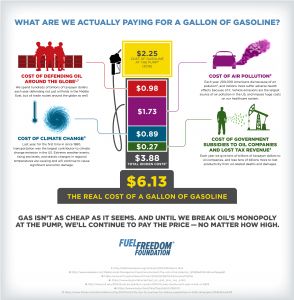GRA said:
Maybe I've read more of it (the 2nd edition) than you have, but I find their numbers plausible.
A biased calculation can be "plausible", but that doesn't make it a fair comparison.
Was this a fair comparison, or a plausible calculation?
GRA said:
Also, they amortized the cost of home EVSEs over 5 years, not 'forever'. EVSEs typically have warranties of 2-3 years, with the longest I've seen being 5, so this seems a reasonable cutoff. They also point out that in home use some EVSEs are included with cars, others have EVSEs and/or installation bundled with them while others are purchased separately. Some are being plugged in to existing L1 receptacles, others require electrical work for L2 which may or may not include panel upgrades, etc., which makes calculating costs difficult given such wide variation in circumstances.
So did they provide costs for all or at least some of these options? It seems very plausible to me that you might spend more than gas on an EVSE plus electrical work plus electric cost for the most expensive EVSE option, the most expensive electrical grid, and the shortest daily driving. Oh, and add the punitive taxes on EVs in some states. Oh, and not deduct any subsidies and/or rebates.
Oh, and most charging is at home, and most public charging by energy delivered is at the workplace. Workplace charging is often cheaper than other public charging, and can be cheaper than home charging. Did Anderson Consulting consider workplace charging? Other than to dismiss it? Charging behaviors are not simple, see:
https://www.sciencedirect.com/science/article/abs/pii/S0306261921016214
Assuming L1 with an included EVSE (cost $0 plus electric) isn't fair as well. Only about a quarter of EVs are L1 charged. So what number did they report? And how did they calculate it? And is it fair?
I've read the study, I know. Not even close to fair.
https://www.andersoneconomicgroup.com/wp-content/uploads/2022/04/EV_ICE_FuelingCosts_2ed4-5-22.pdf
Pick the max from column A, and the minimum from column B. Get the answer you want. Sad.
A fair comparison is hard. I grant that. Rather than getting a single number, a range would be more meaningful. Or perhaps multiple use cases. Or a graph showing the best estimate of the distribution.
Oh, and deadhead miles to charging. Bogus. BOGUS.
Bogus.
For EVs, we assume 6 miles per trip for a
commercial L2 charger, and 10 miles per trip to a commercial fast DC charger.
I don't go much out of my way ever to get to an commercial L2. I use L2 charging at hotels, restaurants, workplace, etc. No deadhead miles at all. None. Never. Ok, EV parking might be a few steps farther away from the hotel door. Does anyone drive 6 miles to get to a commercial L2? This is just ludicrous. Beyond any realistic belief. What are you going to do while the car charges? Not even plausible.
I DC fast charge on longer trips. 10 miles out of my way? Once or twice, sure. Rarely, usually far less. To be fair, on the average might be half of this. Longer trips can lead to routes I can't take because of lack of charging. Like home to Grand Canyon, the shortest drive doesn't have charging available.
Compare
https://abetterrouteplanner.com/?plan_uuid=ef6db075-9e15-4dbd-b03a-9bb26462fd08
https://goo.gl/maps/AYDZYzHSsynNR3pe8
13 charges, 198 more miles. 13 deadhead miles per charge. This example isn't typical, most of my L3 charges are a mile or so off the path, and the path is mostly the same as I'd drive with an ICE. So 5 miles extra might be realistic. 10 miles per charge is plausible, but not realistic or fair. But not as ludicrous as driving 6 miles to an L2.




